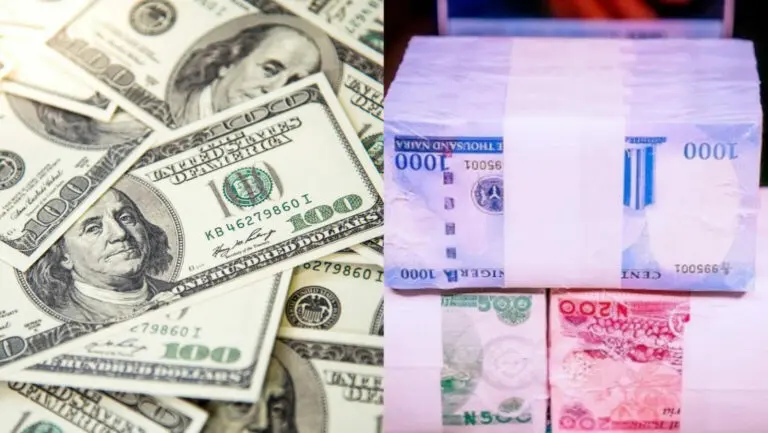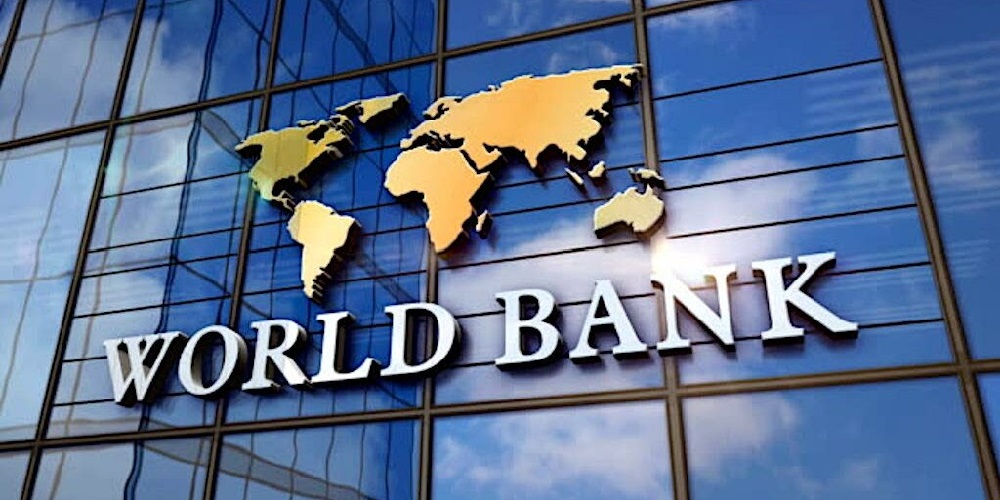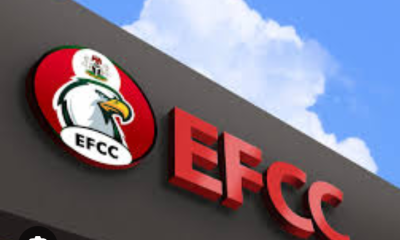Economy
FG services foreign debt with $3.5bn

The Federal Government spent $3.58 billion servicing its foreign debt in the first nine months of 2024, representing a 39.77 per cent increase from the $2.56bn spent during the same period in 2023.
This is according to data from the Central Bank of Nigeria on international payment statistics.
The significant rise in external debt service payments shows the mounting pressure on Nigeria’s fiscal balance amid ongoing economic challenges.
Data from CBN’s international payment statistics reveal that the highest monthly debt servicing payment in 2024 occurred in May, amounting to $854.37m.
In comparison, the highest monthly expenditure in 2023 was $641.70m, recorded in July. The sharp contrast in May’s figures between the two years ($854.37m in 2024 versus $221.05m in 2023) highlights the rising cost of debt obligations, as Nigeria battles massive devaluation of the naira.
The CBN showed significant month-on-month changes in debt servicing costs, with some months recording sharp increases compared to the previous year. A breakdown of the data revealed varied trends across the nine months.
In January 2024, debt servicing costs surged by 398.89 per cent, rising to $560.52m from $112.35m in January 2023. February, however, saw a slight decline of 1.84 per cent, with payments reducing from $288.54m in 2023 to $283.22m in 2024.
March recorded a 31.04 per cent drop in payments, falling to $276.17m from $400.47m in the same period last year. April saw a significant rise of 131.77 per cent, with $215.20m paid in 2024 compared to $92.85m in 2023.
The highest debt servicing payment occurred in May 2024, when $854.37m was spent, reflecting a 286.52 per cent increase compared to $221.05m in May 2023. June, on the other hand, saw a 6.51 per cent decline, with $50.82m paid in 2024, down from $54.36m in 2023.
July 2024 recorded a 15.48 per cent reduction, with payments dropping to $542.50m from $641.70m in July 2023. In August, there was another decline of 9.69 per cent, as $279.95m was paid compared to $309.96m in 2023. However, September 2024 saw a 17.49 per cent increase, with payments rising to $515.81m from $439.06m in the same month last year.
The data raises concerns about the growing pressure of Nigeria’s foreign debt obligations, with rising global interest rates and exchange rate fluctuations contributing to higher costs.
The global credit ratings agency, Fitch, recently projected Nigeria’s external debt servicing will rise to $5.2bn next year.
This is despite the current administration’s insistence on focusing more on domestic borrowings from the capital market.
It also estimated that approximately 30 per cent of Nigeria’s external reserves are constituted by foreign exchange bank swaps.
Regarding external debt, the agency said external financing obligation
The Federal Government spent $3.58 billion servicing its foreign debt in the first nine months of 2024, representing a 39.77 per cent increase from the $2.56bn spent during the same period in 2023.
This is according to data from the Central Bank of Nigeria on international payment statistics.
The significant rise in external debt service payments shows the mounting pressure on Nigeria’s fiscal balance amid ongoing economic challenges.
Data from CBN’s international payment statistics reveal that the highest monthly debt servicing payment in 2024 occurred in May, amounting to $854.37m.
In comparison, the highest monthly expenditure in 2023 was $641.70m, recorded in July. The sharp contrast in May’s figures between the two years ($854.37m in 2024 versus $221.05m in 2023) highlights the rising cost of debt obligations, as Nigeria battles massive devaluation of the naira.
The CBN showed significant month-on-month changes in debt servicing costs, with some months recording sharp increases compared to the previous year. A breakdown of the data revealed varied trends across the nine months.
In January 2024, debt servicing costs surged by 398.89 per cent, rising to $560.52m from $112.35m in January 2023. February, however, saw a slight decline of 1.84 per cent, with payments reducing from $288.54m in 2023 to $283.22m in 2024.
March recorded a 31.04 per cent drop in payments, falling to $276.17m from $400.47m in the same period last year. April saw a significant rise of 131.77 per cent, with $215.20m paid in 2024 compared to $92.85m in 2023.
The highest debt servicing payment occurred in May 2024, when $854.37m was spent, reflecting a 286.52 per cent increase compared to $221.05m in May 2023. June, on the other hand, saw a 6.51 per cent decline, with $50.82m paid in 2024, down from $54.36m in 2023.
July 2024 recorded a 15.48 per cent reduction, with payments dropping to $542.50m from $641.70m in July 2023. In August, there was another decline of 9.69 per cent, as $279.95m was paid compared to $309.96m in 2023. However, September 2024 saw a 17.49 per cent increase, with payments rising to $515.81m from $439.06m in the same month last year.
The data raises concerns about the growing pressure of Nigeria’s foreign debt obligations, with rising global interest rates and exchange rate fluctuations contributing to higher costs.
The global credit ratings agency, Fitch, recently projected Nigeria’s external debt servicing will rise to $5.2bn next year.
This is despite the current administration’s insistence on focusing more on domestic borrowings from the capital market.
It also estimated that approximately 30 per cent of Nigeria’s external reserves are constituted by foreign exchange bank swaps.
Regarding external debt, the agency said external financing obligations through a combination of multilateral lending, syndicated loans, and potentially commercial borrowing will raise the servicing from $4.8bn in 2024 to $5.2bn in 2025.
The anticipated servicing includes $2.9bn of amortisations, including a $1.1bn Eurobond repayment due in November.
The Small and Medium Enterprises Development Agency and economists have stated that the rise in Nigeria’s public debt might create macroeconomic challenges, especially if the debt service burden continues to grow.
The Chief Executive Officer of the Centre for the Promotion of Public Enterprises, Dr Muda Yusuf, explained that the situation could lead to a vicious circle, warning that “we don’t end up in a debt trap.”
He said, “I think there is a need for us to be very conscious of and watch the rate of growth of our public debt. Because it could create macro-economic challenges especially if the burden of debt service continues to grow.”
He maintained that there is a need for the government to reduce the exposure to foreign debts because the number has grown so due to the exchange rate.s through a combination of multilateral lending, syndicated loans, and potentially commercial borrowing will raise the servicing from $4.8bn in 2024 to $5.2bn in 2025.
The anticipated servicing includes $2.9bn of amortisations, including a $1.1bn Eurobond repayment due in November.
The Small and Medium Enterprises Development Agency and economists have stated that the rise in Nigeria’s public debt might create macroeconomic challenges, especially if the debt service burden continues to grow.
The Chief Executive Officer of the Centre for the Promotion of Public Enterprises, Dr Muda Yusuf, explained that the situation could lead to a vicious circle, warning that “we don’t end up in a debt trap.”
He said, “I think there is a need for us to be very conscious of and watch the rate of growth of our public debt. Because it could create macro-economic challenges especially if the burden of debt service continues to grow.”
He maintained that there is a need for the government to reduce the exposure to foreign debts because the number has grown so due to the exchange rate.
Economy
75.5% of rural Nigerians now live below poverty line — World Bank

The World Bank has disclosed that a staggering 75.5 per cent of rural Nigerians are now living below the poverty line, reflecting deepening hardship in the country’s hinterlands.
This was revealed in the Bank’s April 2025 Poverty and Equity Brief for Nigeria, which paints a grim picture of worsening economic hardship, widening inequality, and persistent underdevelopment across much of the nation.
While poverty is widespread among urban populations, the report emphasised that the situation is significantly worse in rural areas, where economic stagnation, high inflation, and insecurity have exacerbated living conditions.
“Based on the most recent official household survey data from Nigeria’s National Bureau of Statistics, 30.9 per cent of Nigerians lived below the international extreme poverty line of $2.15 per person per day in 2018/19 before the COVID-19 pandemic,” the report stated.
The report also highlighted Nigeria’s enduring regional disparities. “Nigeria remains spatially unequal. The poverty rate in northern geopolitical zones was 46.5 per cent in 2018/19, compared with 13.5 per cent for southern ones. Inequality measured by the Gini index was estimated at 35.1 in 2018/19.
“Nigeria’s Prosperity Gap — the average factor by which individuals’ incomes must be multiplied to attain a prosperity standard of $25 per day for all — is estimated at 10.2, higher than most peers.”
Despite successive policy interventions, these figures underscore a persistent economic divide across the country.
The report’s demographic analysis found that children aged 0 to 14 years had a poverty rate of 72.5 per cent, reflecting the scale of deprivation among the youngest segment of the population.
Gender disparities were also observed, with 63.9 per cent of females and 63.1 per cent of males classified as poor under the $3.65 per day lower-middle-income threshold.
Education emerged as a significant determinant of poverty, with Nigerians lacking formal education experiencing a poverty rate of 79.5 per cent. This contrasts with 61.9 per cent for those with primary education and 50.0 per cent for secondary school graduates. Only 25.4 per cent of those with tertiary education were considered poor.
The report also drew attention to multidimensional poverty indicators, which further reflect widespread deprivation.
According to the World Bank, about 30.9 per cent of Nigerians live on less than $2.15 daily, 32.6 per cent lack access to limited-standard drinking water, 45.1 per cent do not have limited-standard sanitation, and 39.4 per cent have no electricity.
Education access remains a challenge, with 17.6 per cent of adults yet to complete primary education, and 9.0 per cent of households reporting at least one school-aged child not enrolled in school.
The report noted that even before the COVID-19 pandemic, efforts to reduce extreme poverty had largely stalled.
“Before COVID-19, extreme poverty reduction had almost stagnated, dropping by only half a percentage point annually since 2010. Living standards of the urban poor are hardly improving, and jobs that would allow households to escape poverty are lacking,” the report read.
Although the World Bank acknowledged recent economic reforms aimed at stabilising Nigeria’s macroeconomic outlook, it warned that persistently high inflation continues to undermine household purchasing power, particularly in urban areas where incomes have not kept pace with rising costs.
In light of the worsening situation, the Bank called for urgent policy action to shield vulnerable groups from inflationary shocks and to drive job creation through more productive economic activities.
Economy
Naira Records Marginal Decline Against Dollar at Official Market

The Nigerian naira experienced a mild drop in value on Friday, closing at ₦1,602.18 per dollar in the official foreign exchange market, based on figures released by the Central Bank of Nigeria (CBN).
This marks a decrease of ₦5.49 from the rate of ₦1,596.69 recorded on April 30, the last trading day before the May 1 Workers’ Day holiday—indicating a depreciation of approximately 0.34%.
Earlier in the week, from Monday to Wednesday, the naira remained relatively stable, exchanging at ₦1,599.95, ₦1,599.71, and ₦1,596.69 respectively.
Although the local currency showed some consistency mid-week, it wrapped up the week with a loss, following a sligh dip of 0.02% at the beginning of the week
Economy
Black Market Dollar hits N1,610 Amid Economic quagmire

What is the Dollar to Naira Exchange Rate in the Black Market (Also Known as the Parallel Market or Aboki FX)?
Below is the black market exchange rate for the U.S. dollar to the Nigerian naira as of Thursday, May 1, 2025. These are the typical rates at which you can exchange dollars for naira:
Dollar to Naira Black Market Exchange Rate (May 1, 2025):
At the Lagos Parallel Market, also referred to as the black market, Bureau De Change (BDC) operators are buying dollars at ₦1,602 and selling at ₦1,610, according to market sources.
Please note: The Central Bank of Nigeria (CBN) does not recognize or endorse transactions conducted on the parallel market. The CBN advises individuals and businesses seeking foreign exchange to use official banking channels.
-

 News6 hours ago
News6 hours agoWhy ‘VeryDarkMan was arrested – EFCC
-

 News17 hours ago
News17 hours agoMassive turnout as Bishop David Abioye holds first service in new church + Video
-

 Economy16 hours ago
Economy16 hours ago75.5% of rural Nigerians now live below poverty line — World Bank
-

 News17 hours ago
News17 hours agoHow US-Based Yoruba Monarch Died After Brutal Assault In Oyo Palace, Allegedly Ordered By Alaafin Amid Supremacy Row With Ooni Of Ife
-

 Education8 hours ago
Education8 hours agoOver 1.5m candidates score less than 200 in 2025 – UTME
-

 Entertainment6 hours ago
Entertainment6 hours agoHow I narrowly escaped death in U.S hotel room – Seun Kuti
-

 News8 hours ago
News8 hours ago‘S3x is good, I enjoy it,’ Bishop Adejumo tells wives
-

 News16 hours ago
News16 hours ago‘Cabals’ still fighting against our refinery — Dangote






